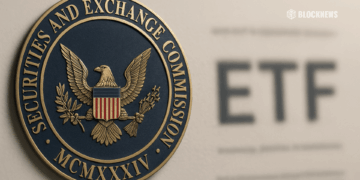- The imminent ‘ZhangHeng’ upgrade in BNB Chain introduces a revolutionary feature: the ability to freeze block creation under certain conditions, increasing security measures for on-chain assets.
- The feature, part of Binance Evolution Proposal (BEP) 255, aims to mitigate the risks from possible cross-chain bridge vulnerabilities, enhancing the safety of BNB Beacon Chain’s assets.
- While it might disrupt downstream services temporarily, the new feature emphasizes the company’s commitment to safeguarding the blockchain and its users, marking a significant stride in blockchain security.
Binance is on the brink of rolling out a new version of its BNB Beacon Chain mainnet, poised to set a precedent with an unprecedented feature – the ability to stop block creation under certain scenarios. This unique functionality, designed to safeguard on-chain assets, is projected to be operational after the upcoming hard fork planned for block height 328,088,888, anticipated to take place on July 19.
This hefty update, baptized as ‘ZhangHeng’, will usher in Binance evolution proposal BEP-255, engineered to facilitate on-chain asset reconciliation. Binance is optimistic that this feature could serve as a safeguard against potential cross-chain bridge vulnerabilities, like the one the BNB Smart Chain grappled with in October 2022.
Binance has been vigorously working to reinforce cross-chain security, having already implemented BEP171. Yet, the soon-to-be-introduced BEP-255 proposal is targeted to fortify the BNB Beacon Chain’s assets even more, especially after a bridge exploit. This will be achieved by closely tracking user balance changes within each block to detect possible anomalies.
If the system spots discrepancies in reconciliation, it will trigger a “panic” mode, which halts the generation of new blocks. While Binance recognizes the ripple effects this would have on downstream services like bridge operations and transactions on exchanges, it believes the stern measure is crucial to protect the blockchain and its users.
To resume normal functioning of the blockchain, a hard fork is needed to rectify any reconciliation errors. Once the problem has been rectified, downstream services can be restored.
The impending hard fork will also rectify a bug linked to rogue key attacks and boost the chain’s ability to manage intricate business rules and logic. Validators are asked to update their software to version v0.10.16 ahead of the hard fork to avoid possible glitches. Although Binance has detailed guidance for node operators, it ensures that BNB token holders using centralized exchanges or cold wallets don’t need to take immediate action.
Binance Coin Still in the Top 10
The ascent of Binance Coin (BNB), a utility token from Binance—one of the world’s largest cryptocurrency exchanges—into the top 10 cryptocurrencies demonstrates a success story driven by strategic positioning, versatile utility, and escalating platform growth. BNB’s versatility, serving purposes such as paying transaction fees and powering the Binance Decentralized Exchange, has garnered robust demand, propelling its price and market capitalization upwards.
Additionally, Binance’s strategy to periodically buyback and ‘burn’ BNB, thereby reducing its supply, has also bolstered the token’s value. Despite the ever-changing dynamics of the crypto market and regulatory landscapes, as of July 2023, BNB has secured a spot among the top 10 cryptocurrencies. This milestone is a testament to the importance of utility, demand, and strategic initiatives in a digital asset’s trajectory towards market prominence.














